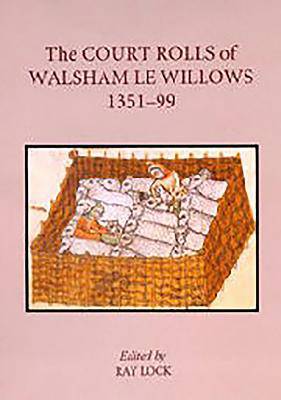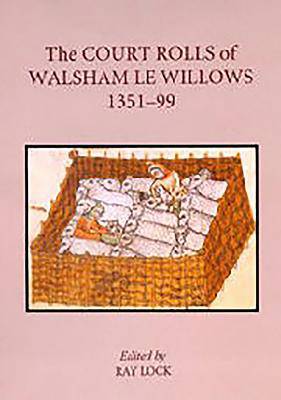
- Afhalen na 1 uur in een winkel met voorraad
- Gratis thuislevering in België vanaf € 30
- Ruim aanbod met 7 miljoen producten
- Afhalen na 1 uur in een winkel met voorraad
- Gratis thuislevering in België vanaf € 30
- Ruim aanbod met 7 miljoen producten
Zoeken
The Court Rolls of Walsham Le Willows, 1351-1399
€ 41,95
+ 83 punten
Omschrijving
Detailed evidence of the workings of local administration and justice in the fourteenth century. The court rolls of the two manors of Walsham le Willows provide detailed evidence of the workings of local administration and justice in the fourteenth century, and were themselves working documents designed to be accessible to all. As Ray Lock says of the documents edited in the first volume, 'they protected the interest of the ordinary man and woman as well as that of the lord of the manor.' This second volume completes the transcription of all surviving court rolls for the fourteenth century manors of Walsham le Willows, covering the proceedings of ninety-nine courts after the Black Death had tragically reduced the local population. Serious difficulties still had to be overcome: for example, two successive reeves of Walsham manor were heavily fined for gross dereliction of duty, and in 1353 a large number of tenants refused to perform services for their lord. In general, however, these rolls give ample evidence of increased prosperity as land-holdings grew in size, and as the land and labour markets quickly stabilised. RAY LOCK is a retired civil servant who has become immersed in the study of local history since his move to Suffolk. He edited the first volume of Walsham le Willows court rolls for the Suffolk Records Society (published in 1998), and has written on the local effects of the Black Death in the Proceedings of the Suffolk Institute of Archaeology and History.
Specificaties
Betrokkenen
- Uitgeverij:
Inhoud
- Aantal bladzijden:
- 244
- Taal:
- Engels
- Reeks:
- Reeksnummer:
- nr. 45
Eigenschappen
- Productcode (EAN):
- 9780851158464
- Verschijningsdatum:
- 7/02/2002
- Uitvoering:
- Hardcover
- Formaat:
- Genaaid
- Afmetingen:
- 160 mm x 239 mm
- Gewicht:
- 725 g

Alleen bij Standaard Boekhandel
+ 83 punten op je klantenkaart van Standaard Boekhandel
Beoordelingen
We publiceren alleen reviews die voldoen aan de voorwaarden voor reviews. Bekijk onze voorwaarden voor reviews.










